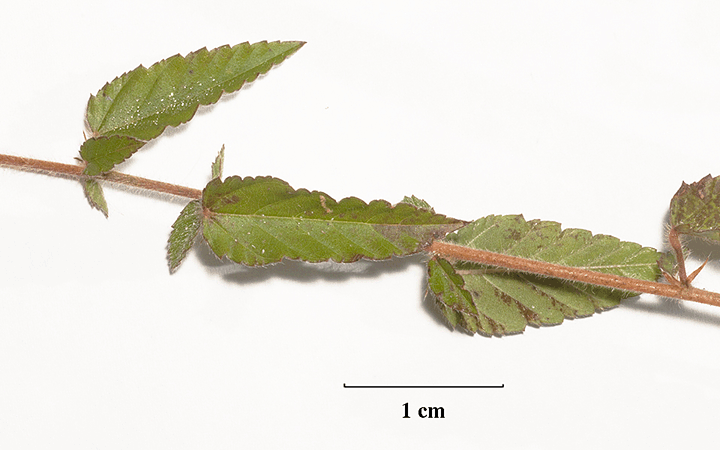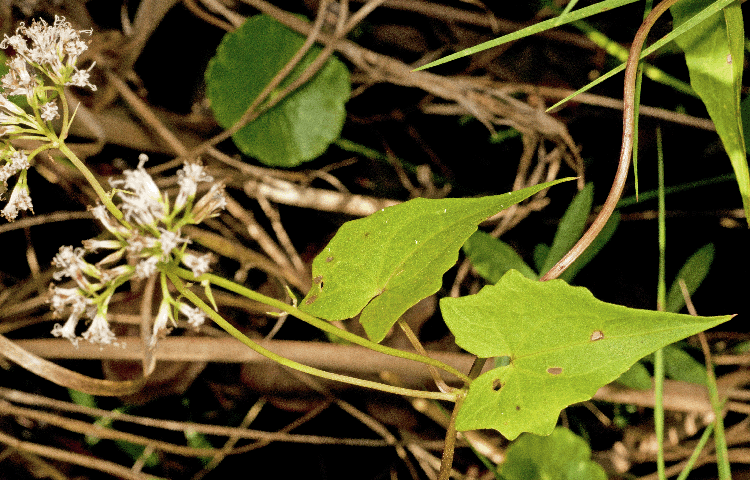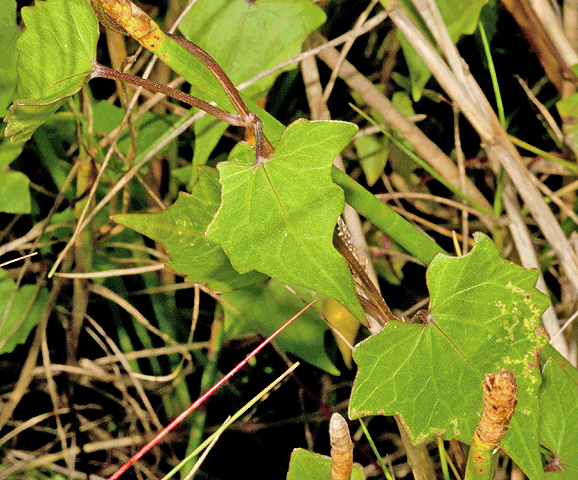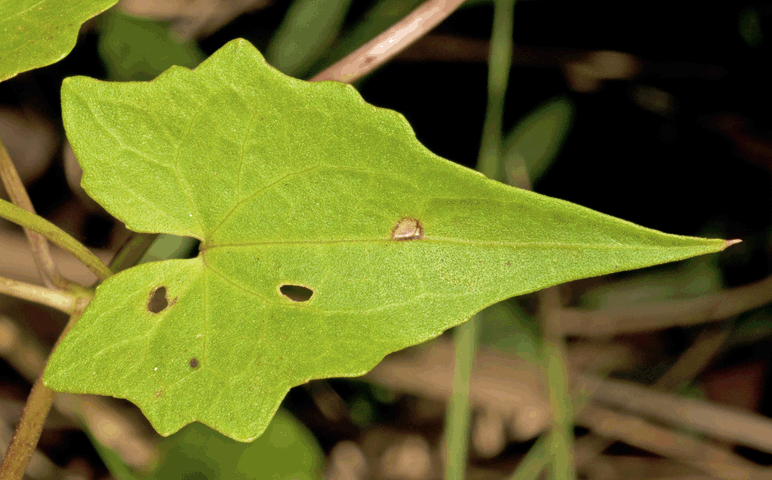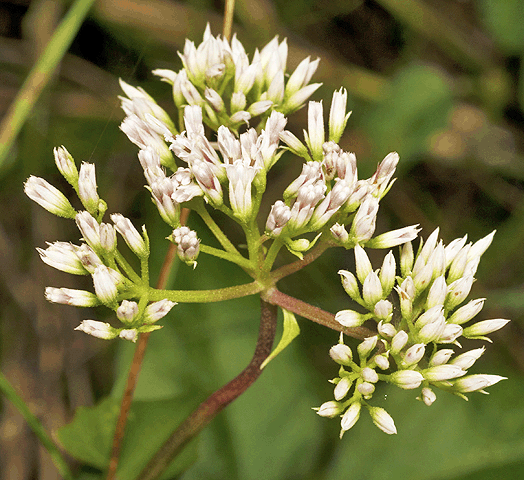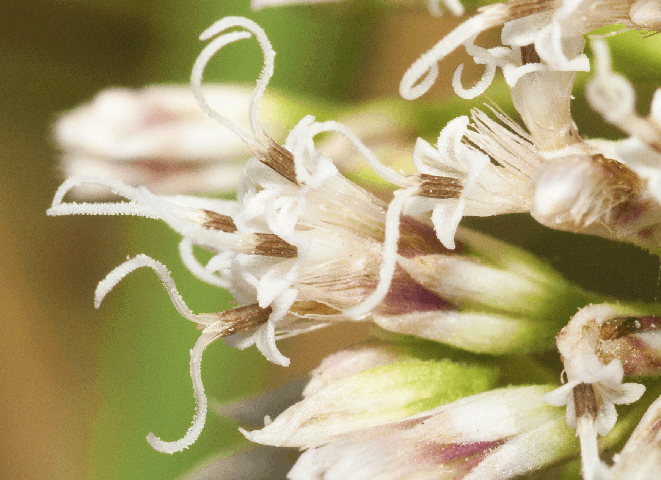Jasminum dichotomum thru Mikania scandens
Species Name |
Common Name |
Jasminum dichotomum |
|
Kyllinga pumila |
|
Lantana camara |
|
Lantana involucrata |
|
Lepidium virginicum |
|
Liatris chapmanii |
|
Liatris tenuifolia |
|
Licania michauxii |
|
Linaria canadensis |
|
Ludwigia decurrens |
|
Ludwigia peruviana |
|
Lygodesmia aphylla |
|
Lygodium microphyllum |
|
Lyonia ferruginea |
|
Lyonia fruticosa |
|
Macroptilium lathyroides |
|
Magnolia virginiana |
|
Mangifera indica n |
|
Melochia spicata |
|
Mikania scandens |
Jasminum dichotomum Gold Coast Jasmine
|
Kyllinga pumila Low Spikesedge
|
Lantana camara Lantana
|
Lantana involucrata Wild Sage
|
Lepidium virginicum Peppergrass / Virginia Pepperweed
|
Liatris chapmanii Chapman's Blazing Star/ Chapman's Gayfeather
|
Liatris tenuifolia Shortleaf Gayfeather / Scrub Blazing Star
|
Licania michauxii Gopher Apple / Ground Oak
|
Linaria canadensis Blue Toadflax
|
Ludwigia decurrens Winged Primrose / Willow Primrose
|
Ludwigia peruviana Peruvian Primrose Willow
|
Lygodesmia aphylla Rose Rush
|
|
Lyonia ferruginea Rusty Lyonia / Rusty Staggerbush
|
Lyonia fruticosa Coastal Plain Staggerbush
|
Macroptilium lathyroides Wild Bushbean
|
Magnolia virginiana Sweetbay Magnolia
|
Mangifera indica n Common Mango
|
Melochia spicata Bretonica Peluda
|
Mikania scandens Climbing Hempweed
|
© Photographs and text by Susan Leach Snyder (Conservancy of Southwest Florida Volunteer), unless otherwise credited above.

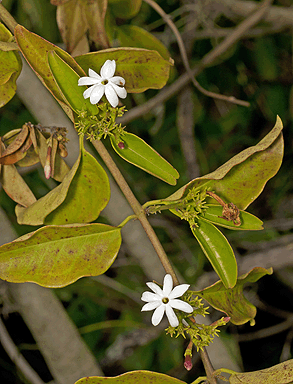

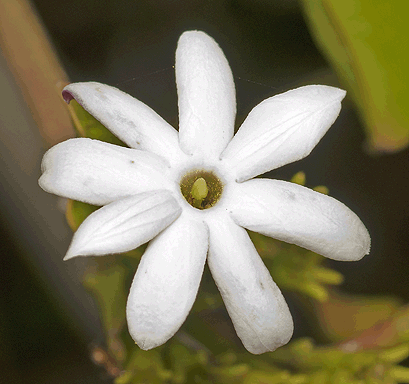
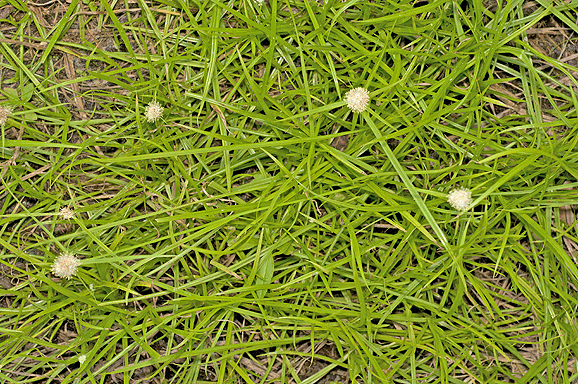
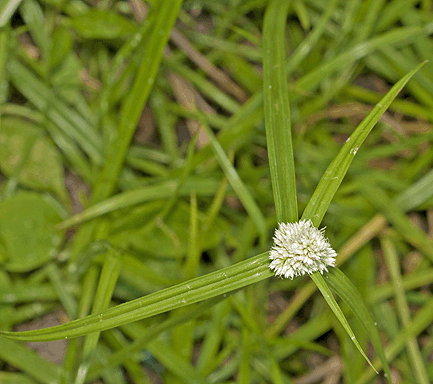
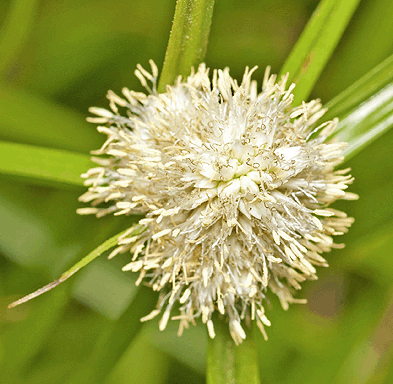
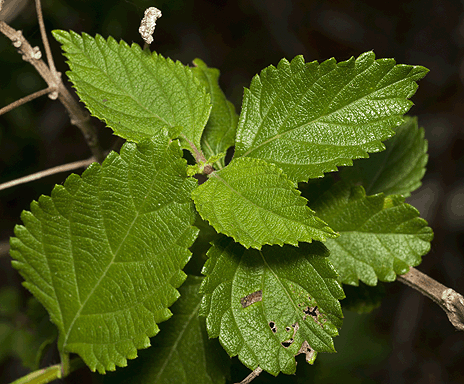
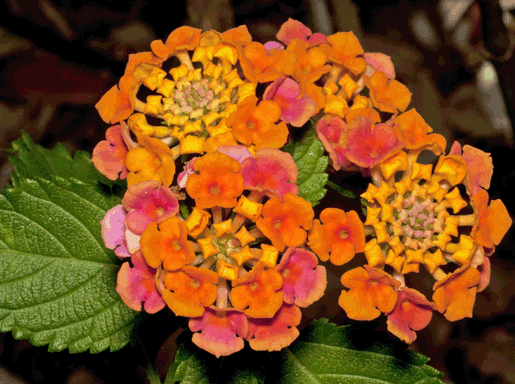
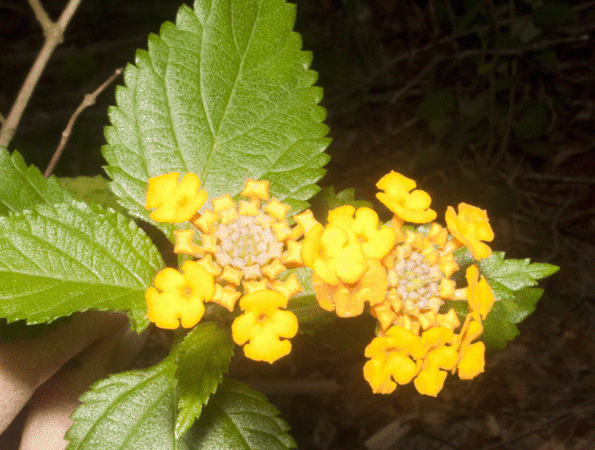
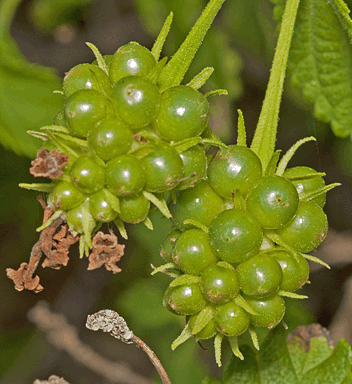 The green fruits (shown at left) ripen to purple and then black. Lantana camara blooms year round and attracts many butterflies. If eaten, the leaves are toxic to livestock and the unripe fruit is toxic to humans.
The green fruits (shown at left) ripen to purple and then black. Lantana camara blooms year round and attracts many butterflies. If eaten, the leaves are toxic to livestock and the unripe fruit is toxic to humans.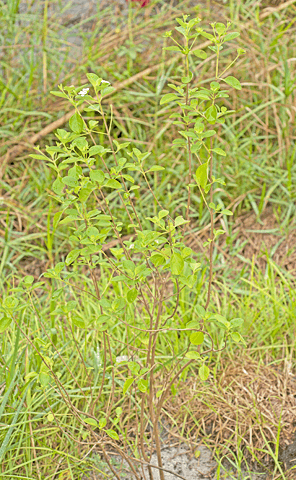

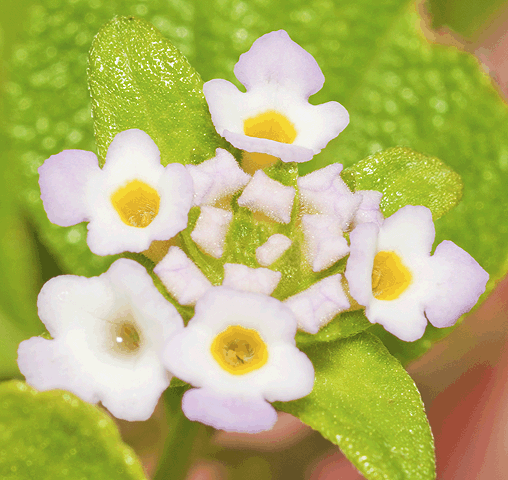
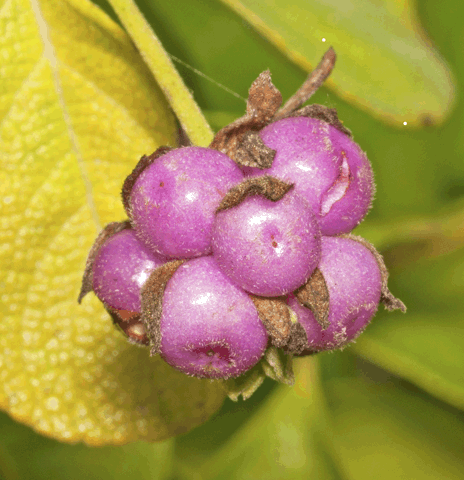 Lantana involucrata is a native shrub member of Family Verbenaceae (The Verbena Family). Wild sage grows in full sun, can live ten or more years, and blooms year round. It grows 1 to 2 m in height, has yellowish bark, and brittle wood. The leaves are aromatic, producing a spicy, sage-like scent.
Lantana involucrata is a native shrub member of Family Verbenaceae (The Verbena Family). Wild sage grows in full sun, can live ten or more years, and blooms year round. It grows 1 to 2 m in height, has yellowish bark, and brittle wood. The leaves are aromatic, producing a spicy, sage-like scent. 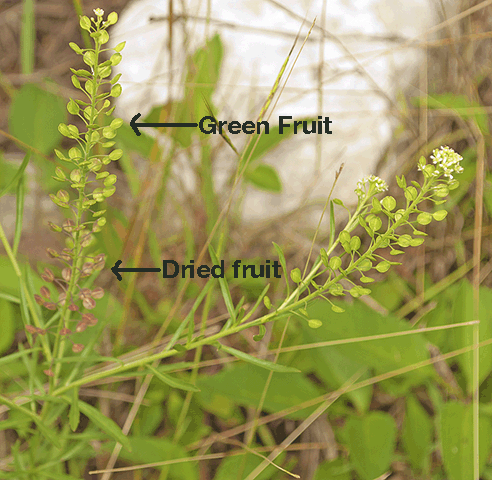 Lepidium virginicum is a member of Family Brassicaceae (Mustard Family), and is native to most of North America. It grows to a height of 10 to 50 cm. Its upper leaves are small and coarsely toothed. Lower leaves are larger and have deep, sharply cut margins.
Lepidium virginicum is a member of Family Brassicaceae (Mustard Family), and is native to most of North America. It grows to a height of 10 to 50 cm. Its upper leaves are small and coarsely toothed. Lower leaves are larger and have deep, sharply cut margins.  A green fruit forms after each flower. Fruits are oval-shaped flattened pods. The shape of the pods give this species its genus name Lepidium meaning "little scale." Pods dry with age and turn brown, as shown in the first photograph.
A green fruit forms after each flower. Fruits are oval-shaped flattened pods. The shape of the pods give this species its genus name Lepidium meaning "little scale." Pods dry with age and turn brown, as shown in the first photograph.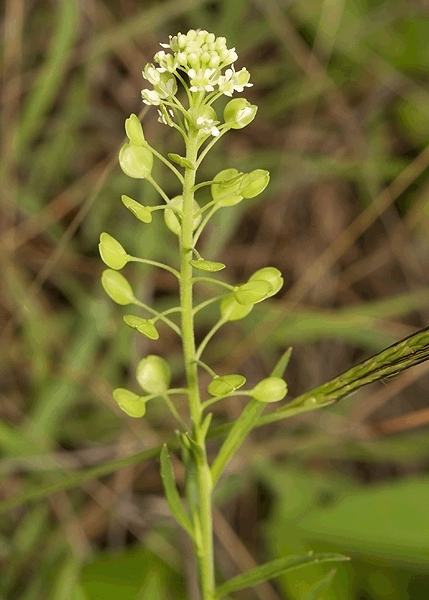
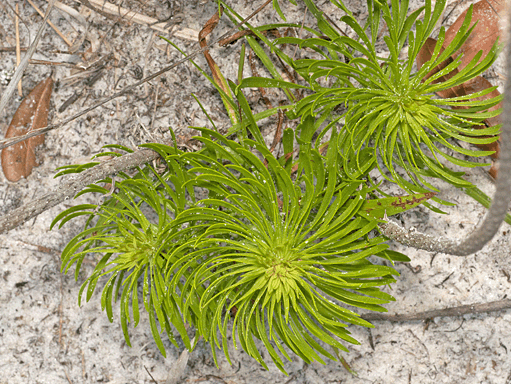
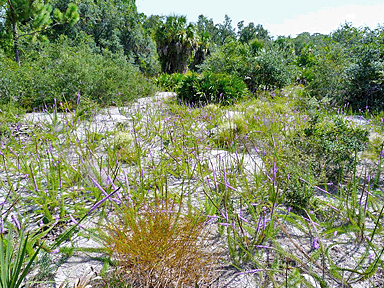
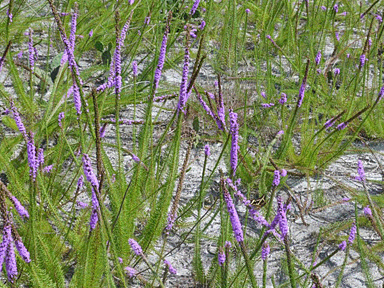
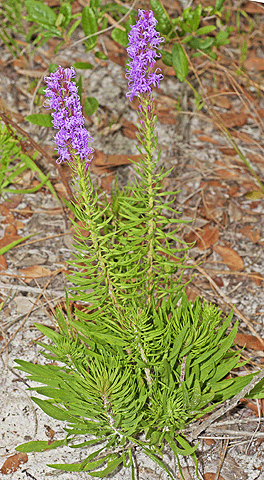
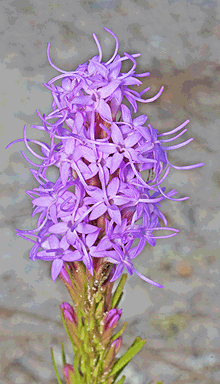
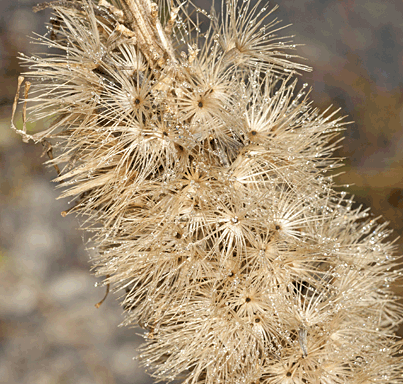
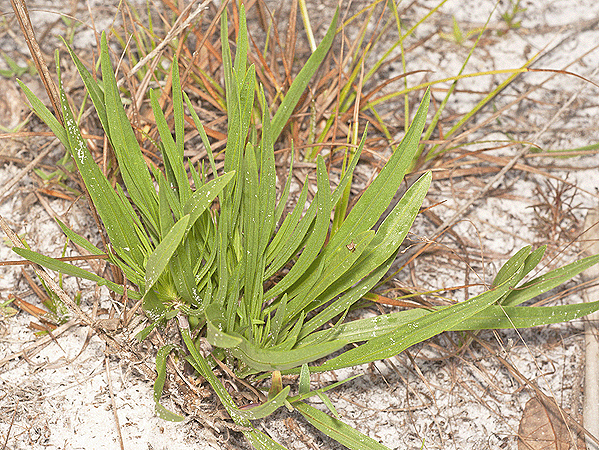 Liatris tenuifolia is a native member of Family Asteraceae (The Aster Family). It is a perennial with linear leaves that become smaller up the flowering stem.
Liatris tenuifolia is a native member of Family Asteraceae (The Aster Family). It is a perennial with linear leaves that become smaller up the flowering stem. 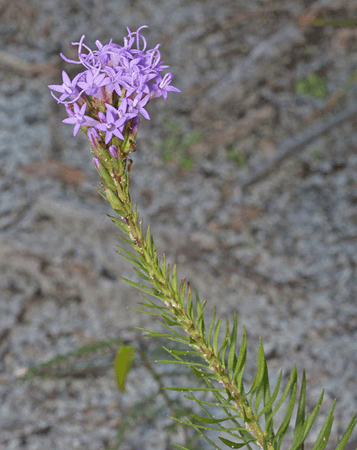
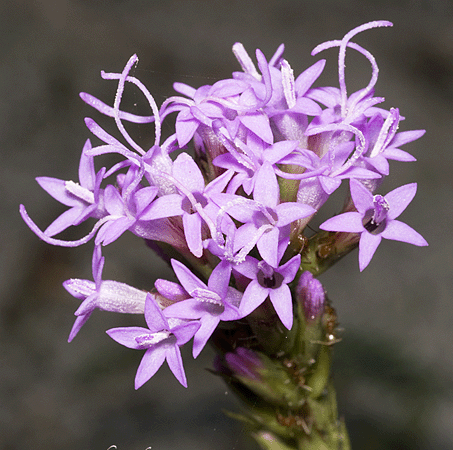
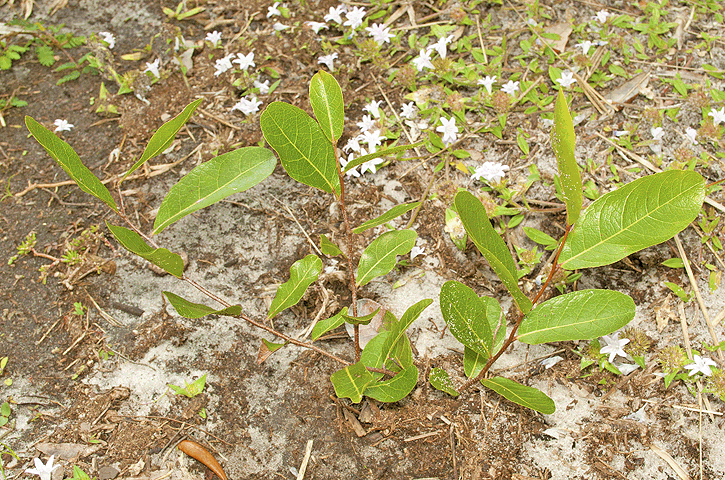
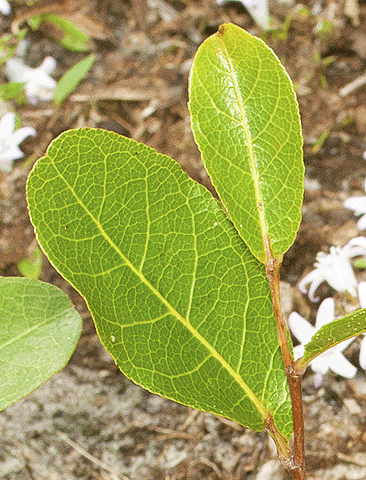
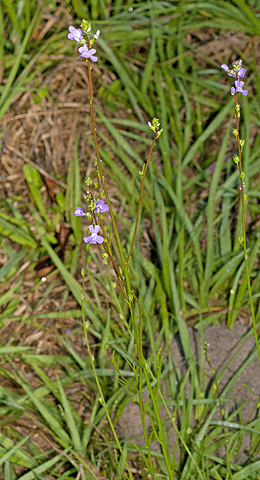
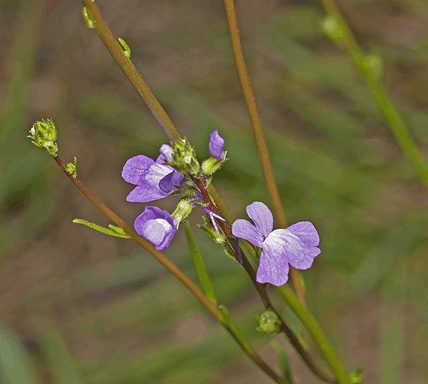
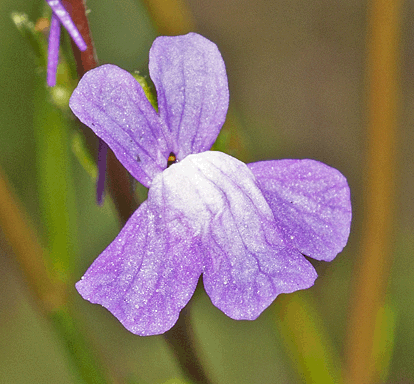

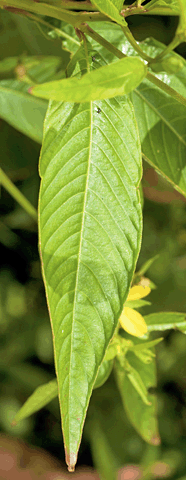
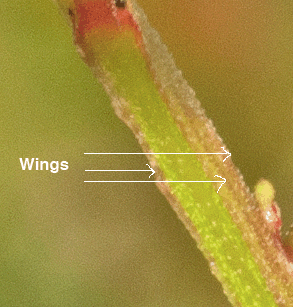
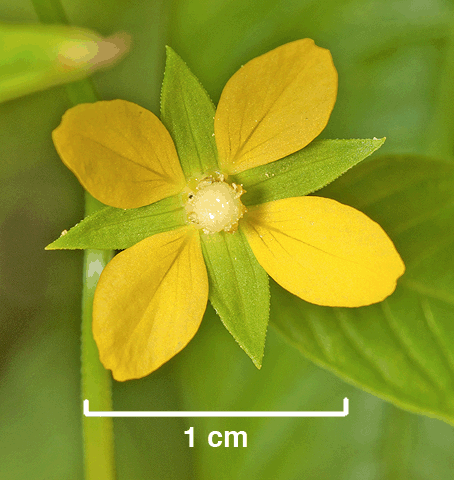
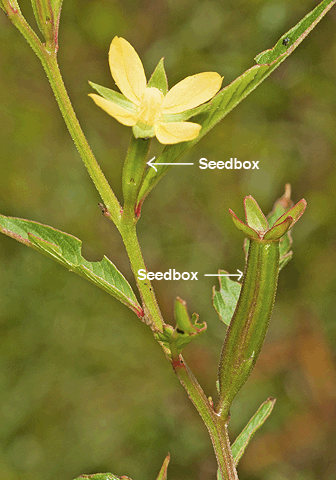
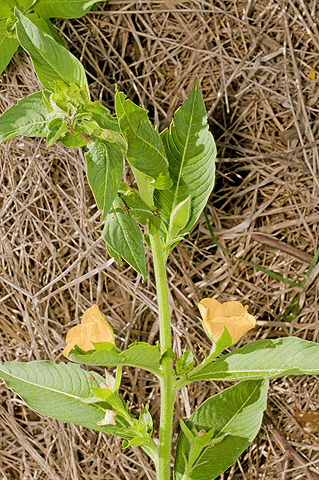
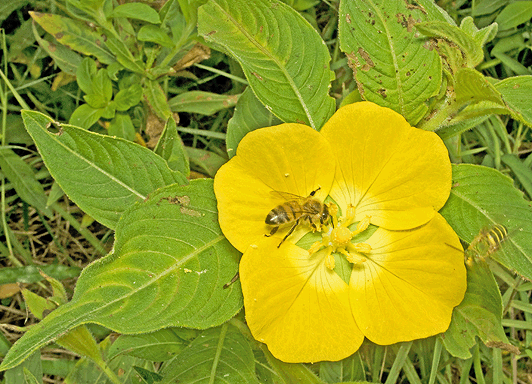
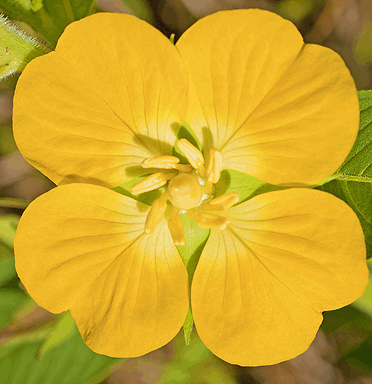
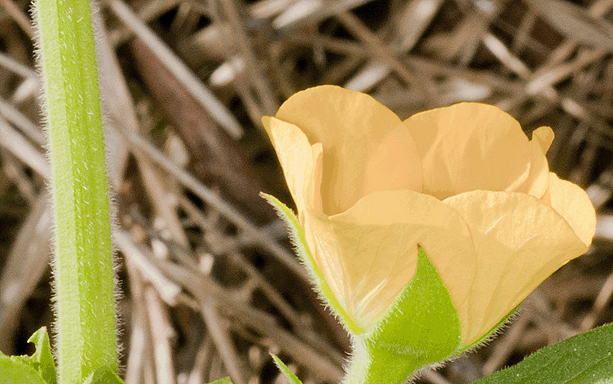
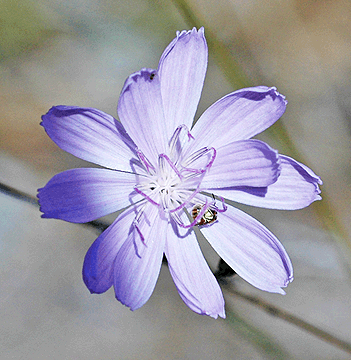
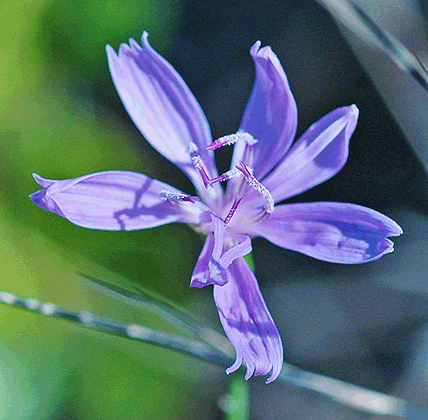
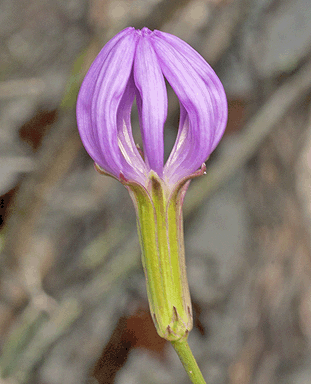
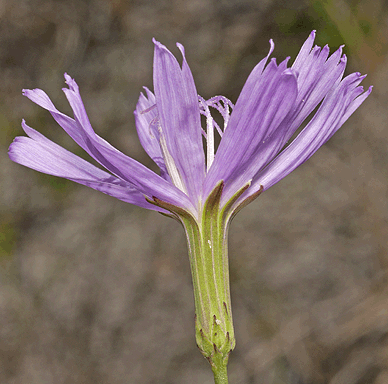
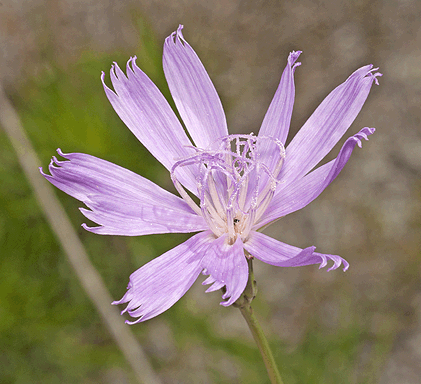
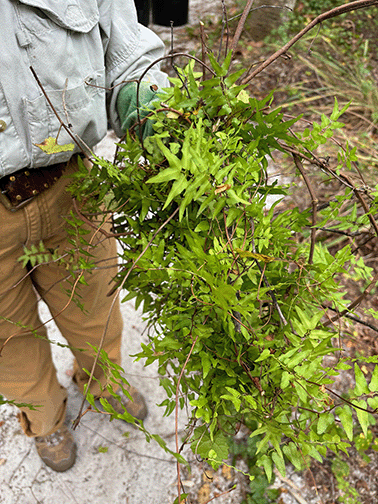
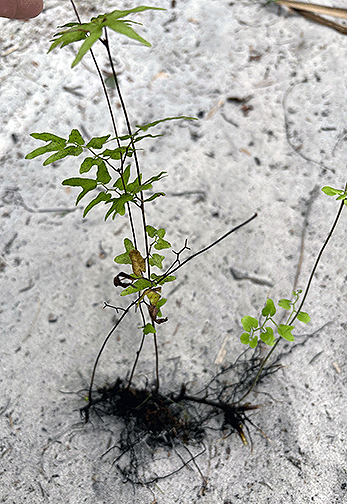
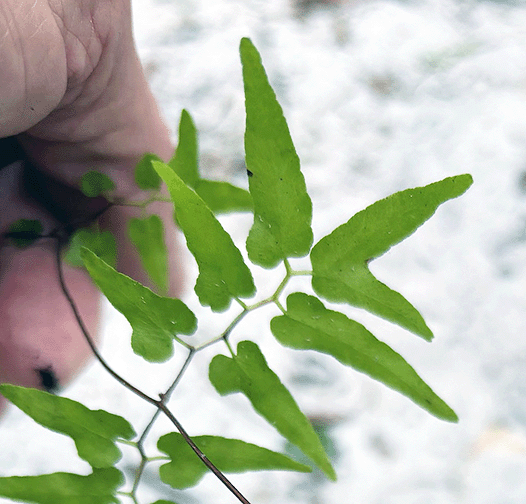

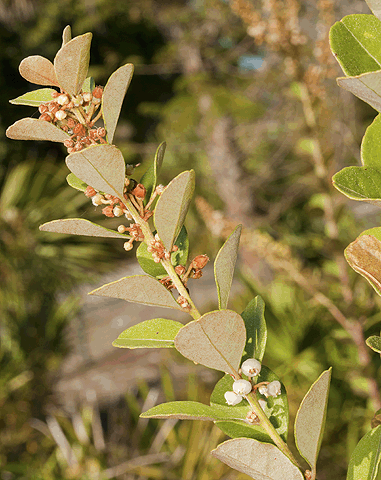 Lyonia ferruginea, a member of Family Ericaceae (The Heath Family), is native to Florida scrub, flatwoods, and sandy hammocks. It is an evergreen with crooked stems and branches. Twigs are gray to brown with rusty to gray pubescence (hairs) and scales. Scales and pubescence slough off with age.
Lyonia ferruginea, a member of Family Ericaceae (The Heath Family), is native to Florida scrub, flatwoods, and sandy hammocks. It is an evergreen with crooked stems and branches. Twigs are gray to brown with rusty to gray pubescence (hairs) and scales. Scales and pubescence slough off with age.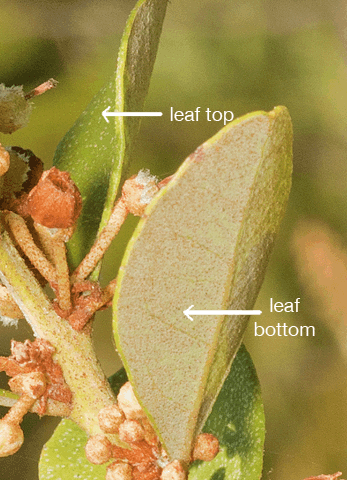 Leaves are simple, alternate, and elliptical, obovate, or ovate. They are 1 to 9 cm long, .5 to 4 cm wide, dark green above, and rusty and scaly below when mature. When leaves are new (as shown in the third photograph), they are rusty or burnt orange on both surfaces. The upper surface has some pubescence along the midrib and often has impressed lateral veins. The lower surface is pubescent with scales that are gray or rust colored. Leaf margins are entire and turned down. The leaves of Rusty Lyonia do not decrease in size near the top of the branch, as do leaves of
Leaves are simple, alternate, and elliptical, obovate, or ovate. They are 1 to 9 cm long, .5 to 4 cm wide, dark green above, and rusty and scaly below when mature. When leaves are new (as shown in the third photograph), they are rusty or burnt orange on both surfaces. The upper surface has some pubescence along the midrib and often has impressed lateral veins. The lower surface is pubescent with scales that are gray or rust colored. Leaf margins are entire and turned down. The leaves of Rusty Lyonia do not decrease in size near the top of the branch, as do leaves of 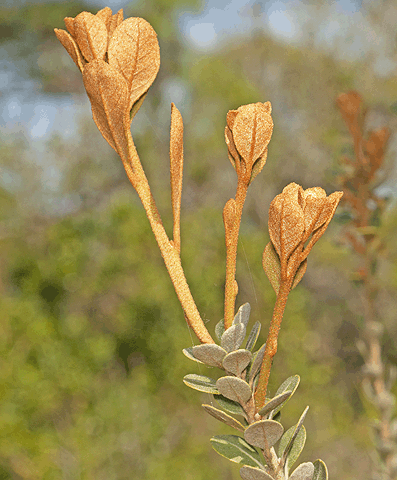
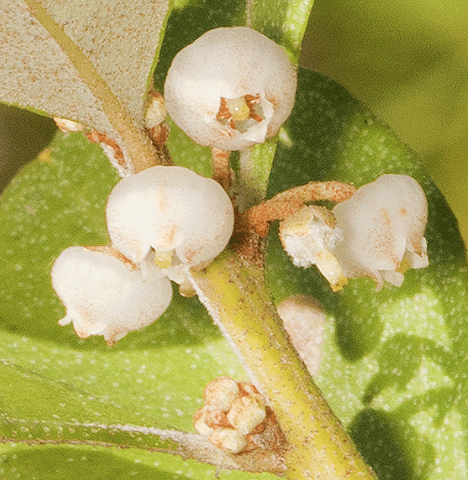 Flowers are white to pinkish and urn-shaped. Fruit is a small brown capsule. A plant can live more than 50 years and grow to 4.6 m or taller.
Flowers are white to pinkish and urn-shaped. Fruit is a small brown capsule. A plant can live more than 50 years and grow to 4.6 m or taller. 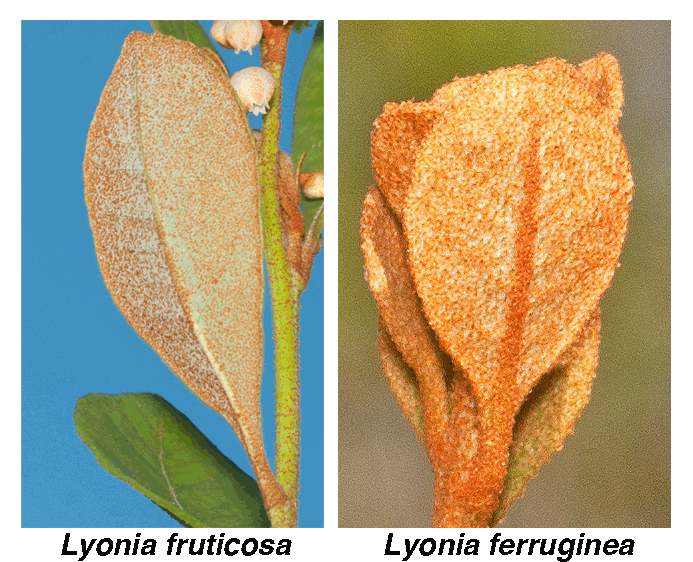
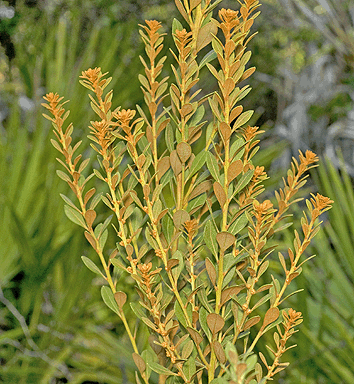
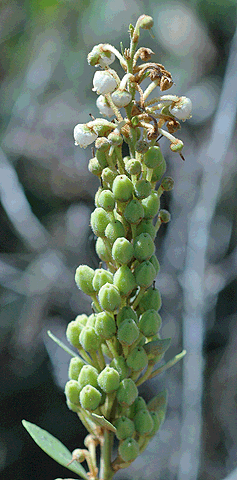

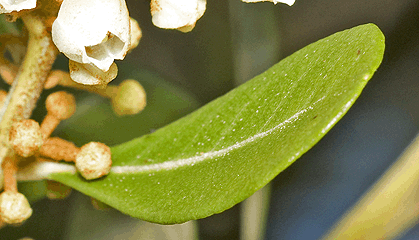
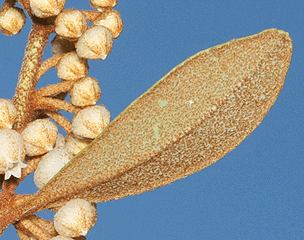
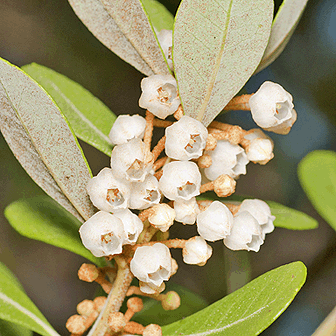
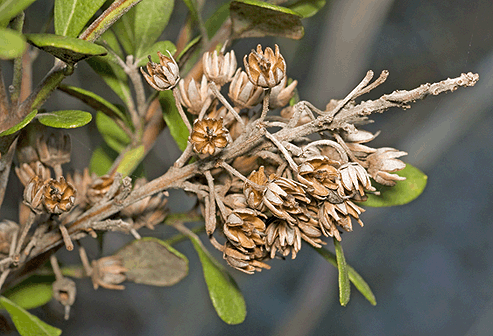
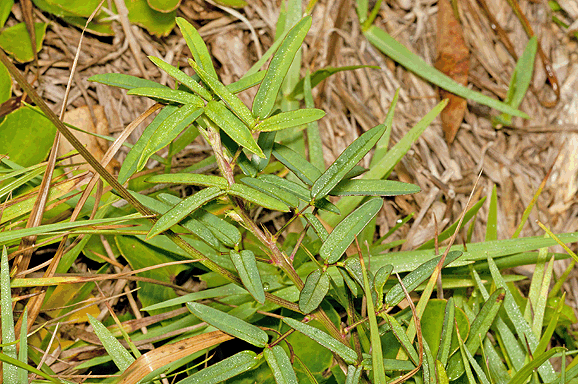
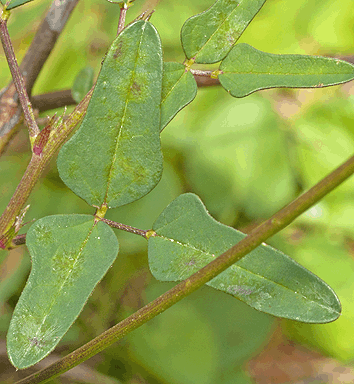

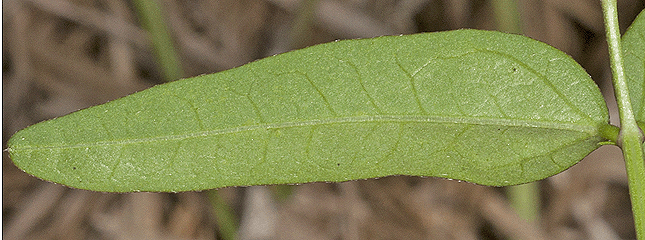
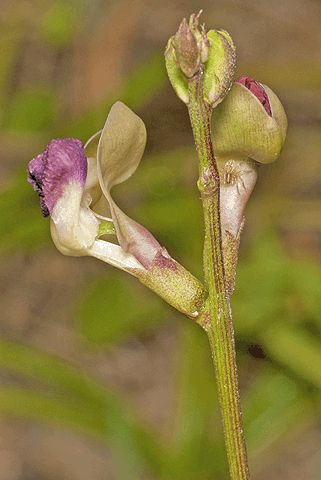
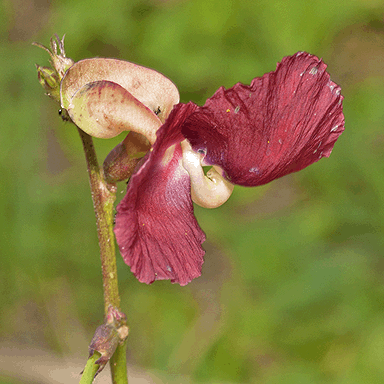
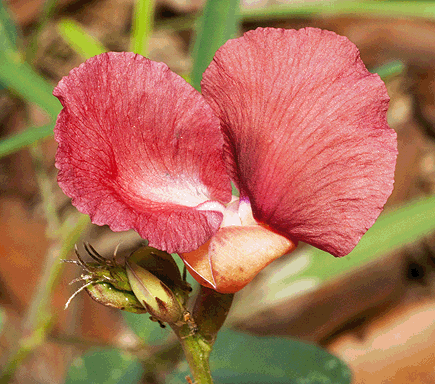
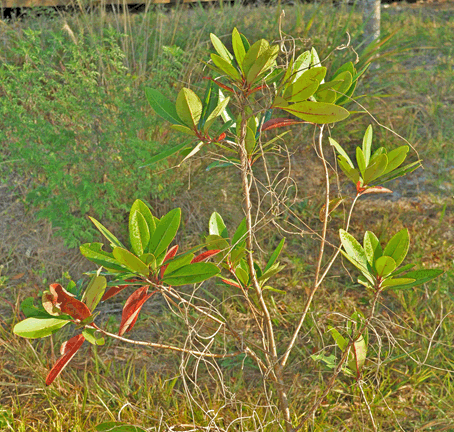
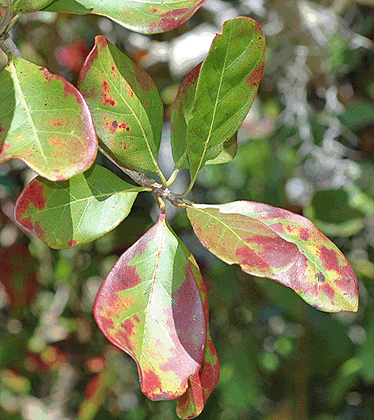
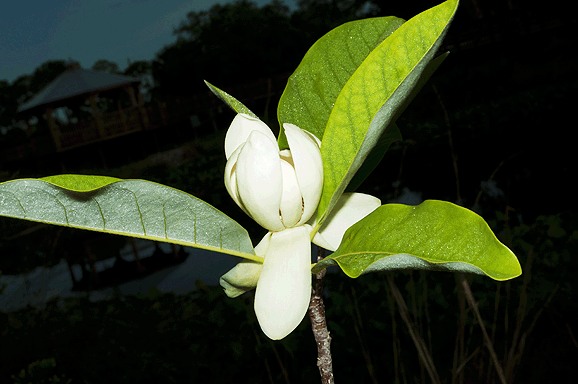

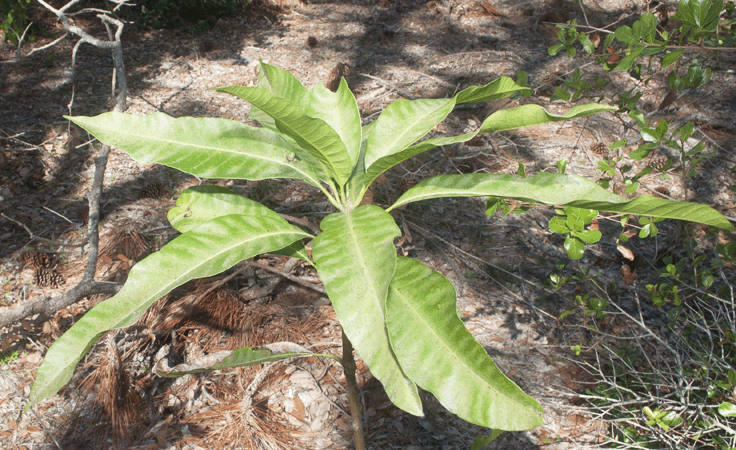
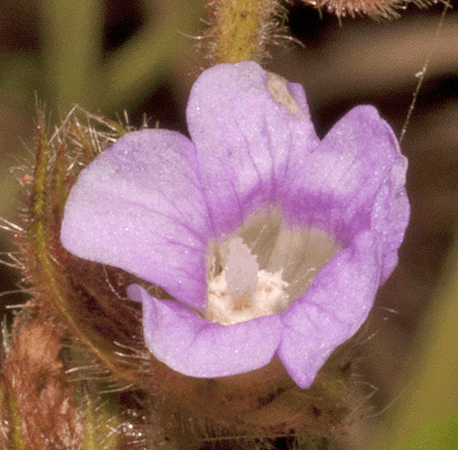
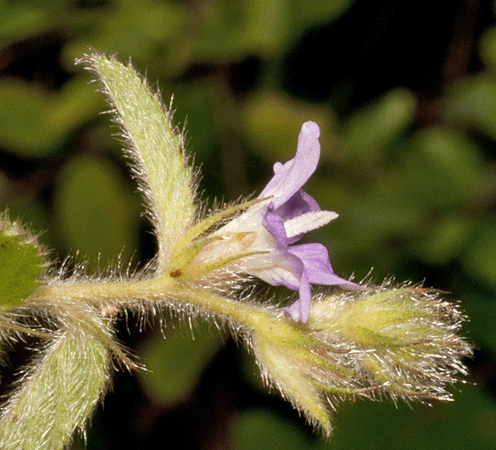 Melochia spicata is a native member of Family Malvaceae (The Mallow Family). As can be seen in these photographs, the plant is very pubescent (hairy).
Melochia spicata is a native member of Family Malvaceae (The Mallow Family). As can be seen in these photographs, the plant is very pubescent (hairy). 